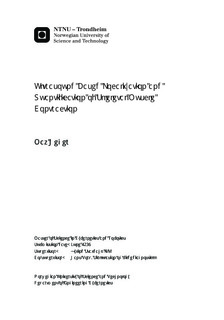Ultrasound Based Localization and Quantification of Skeletal Muscle Contraction
Abstract
Earlier experiments indicates that motor unit activity during isometric contractions can be imaged using a high-definition ultrasound scanner. In this study, ultrasound raw-data is analysed in MATLAB to localize and quantify the signal contributions from individual motor units during a muscle twitch. It is believed that imaging of mechanical response of contracting muscles can contribute to a more explicit study of muscle physiology and a more dexterous method for prosthetic control.Two different experiments were executed during this study, one for determining the time delay between ECG electrode and ultrasound response and one for imaging muscle activity during an isometric contraction. Both test setups consisted of a GE-Vingmed Vivid E9 ultrasound scanner and an ML6-15 linear probe, where the scans were executed by using "Strain rate"-mode in the test option "Msc TVI" with a frequency of 15MHz, which resulted in frame rates between 120 and 220, depending on the depth of the scan. To determine the time delay, an ECG electrode was connected to the probe and then submerged in a bucket filled with water and the last two ECG electrodes, where the time delay between the two responses were measured in MATLAB. To image muscle activity in a sequence of ultrasound strain rate images, the probe were placed in a clamped and fixed position over the biceps, giving images perpendicular to muscle fibers. Scans of isometric muscle contractions were recorded, with ECG electrodes placed on each side of the probe to detect associated motor unit action potentials.The measurements of the time delay between EMG and ultrasound response shows that there are an expected time delay between 6.68ms and 15.38ms, depending on the propagation velocity of the motor unit action potentials. This indicates that motor unit activity can be captured in ultrasound strain rate image sequences. Motor unit behaviour in strain rate image sequences can be used for locating individual motor units, but this method struggles to identify overlapping motor units as individual. It was found that PCA for feature extraction in combination with a cluster based classification algorithm would be a more robust and time-saving method for localization of individual motor units.
